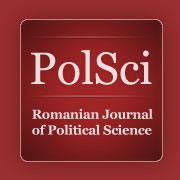In this article we analyse the main characteristics of national interest groups from selected Central and Eastern European post-socialist countries that receive EU money and at the same time are supposed to be supported with EU money vis-à-vis Western EU member-states to a lesser extent. The analysis is based on the data collected in frame of Comparative Interest Groups Survey project with a web survey that was conducted among national interest groups from Slovenia, Lithuania and Poland.
|
Paper
Show Me the Money: The Importance of EU Funding for the Activities of Interest Groups in Post-Socialist Countriesby Meta Novak and Damjan Lajh,
|
ABSTRACT PAPERS CALL FOR PAPERS |
Indexed in:
- Social Sciences Citation Index
(ISI Thomson Reuters) - IPSA
- GESIS
- CIAONET
- EBSCO
- CEEOL
- EPNET
International
Advisory Board
- Alina Mungiu-Pippidi (chair) Hertie School of Governance
- Larry Diamond Stanford University
- Tom Gallagher University of Bradford
- Alena Ledeneva University College London
- Michael McFaul Stanford University
- Dennis Deletant Georgetown University
- Helen Wallace London School of Economics and Political Science
Editorial Board
- Claudiu Tufiș
- Bogdan Iancu
- George Jiglau
- Ingi Iusmen
- Gabriel Bădescu
- Andrei Macsut
- Laura Voinea
Published by:

